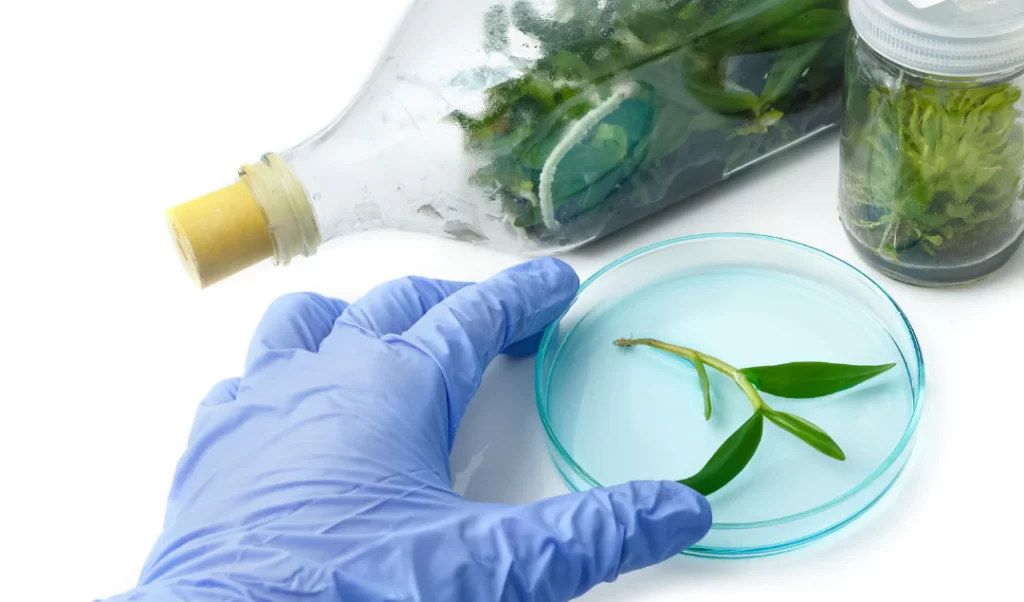Rare and exotic houseplants can add a touch of the extraordinary to your indoor garden. These unique plants often come with specific care requirements that differ from more common houseplants. Understanding how to meet their needs is essential for maintaining their health and beauty. In this guide, we’ll share tips and tricks for caring for rare and exotic houseplants, ensuring they thrive in your home.
Understanding the Basics of Rare and Exotic Plant Care
Caring for rare and exotic houseplants starts with understanding their native habitats. These plants often come from diverse environments such as tropical rainforests, arid deserts, or high-altitude regions. Mimicking these conditions as closely as possible in your home is key to their success.
Light Requirements
Light is one of the most critical factors for plant growth. Rare and exotic houseplants often have specific light needs based on their natural habitats.
- Tropical Plants: Many exotic houseplants, like orchids and anthuriums, come from tropical rainforests where they receive filtered sunlight. Provide bright, indirect light for these plants. East-facing windows are ideal, as they offer morning sunlight that is less intense.
- Desert Plants: Succulents and cacti, which originate from arid regions, require plenty of direct sunlight. Place these plants in south-facing windows where they can receive the most sunlight throughout the day.
- Low-Light Plants: Some rare plants, like certain varieties of ferns and philodendrons, thrive in low-light conditions. These plants are perfect for shaded areas of your home or rooms with limited natural light.
Watering Needs
Proper watering is crucial for the health of rare and exotic houseplants. Overwatering and underwatering are common mistakes that can be detrimental to these plants.
- Tropical Plants: These plants typically require high humidity and consistent moisture. Water them regularly, keeping the soil slightly moist but not soggy. Mist the leaves occasionally to increase humidity.
- Desert Plants: Succulents and cacti have adapted to dry conditions and require infrequent watering. Allow the soil to dry out completely between waterings. During the winter months, reduce watering as these plants enter a dormant period.
- Epiphytic Plants: Some rare plants, like air plants (Tillandsia) and certain orchids, are epiphytes, meaning they grow on other plants or surfaces. These plants absorb moisture from the air and need regular misting or soaking.
Humidity Levels
Many exotic houseplants thrive in high-humidity environments. Maintaining adequate humidity can be challenging, especially in dry or air-conditioned homes.
- Use Humidifiers: Place a humidifier near your rare plants to maintain humidity levels between 60-80%. This is especially important during the winter when indoor air tends to be drier.
- Group Plants Together: Grouping plants can create a microenvironment with higher humidity. The combined transpiration from the plants increases the moisture in the air around them.
- Pebble Trays: Place pots on trays filled with pebbles and water. As the water evaporates, it increases the humidity around the plants.
Temperature Considerations
Temperature plays a significant role in the growth and health of rare and exotic houseplants. Most of these plants prefer stable temperatures that mimic their native environments.
- Avoid Drafts: Keep rare plants away from drafts, air conditioning vents, and heaters. Sudden temperature changes can stress the plants and cause damage.
- Optimal Temperature Range: Most tropical plants thrive in temperatures between 65-80°F (18-27°C). Desert plants can tolerate higher temperatures but should be protected from extreme cold.
- Seasonal Adjustments: Be mindful of seasonal changes and adjust your care routine accordingly. Some plants may require different conditions during their dormant period.
Soil and Potting Mixes
The right soil mix is essential for the health of rare and exotic houseplants. These plants often have specific soil requirements based on their natural habitats.
- Tropical Plants: Use a well-draining, peat-based potting mix for most tropical plants. Adding perlite or orchid bark can improve aeration and drainage.
- Desert Plants: Succulents and cacti need a gritty, fast-draining soil mix. A cactus-specific potting mix or a combination of regular potting soil with sand and perlite works well.
- Epiphytic Plants: For epiphytic plants like orchids and air plants, use a special orchid mix or mount them on bark or wood. These plants do not require traditional soil and benefit from good air circulation around their roots.
Fertilizing Rare and Exotic Houseplants
Feeding your rare and exotic houseplants with the right nutrients is crucial for their growth and flowering.
- Balanced Fertilizers: Use a balanced, water-soluble fertilizer during the growing season. Dilute the fertilizer to half the recommended strength to avoid over-fertilizing.
- Specialized Fertilizers: Some plants, like orchids and carnivorous plants, benefit from specialized fertilizers designed for their specific needs.
- Fertilizing Schedule: Fertilize every 2-4 weeks during the growing season (spring and summer). Reduce or stop fertilizing during the dormant period (fall and winter).
Pruning and Maintenance
Regular pruning and maintenance help keep your rare and exotic houseplants healthy and looking their best.
- Remove Dead or Damaged Leaves: Regularly inspect your plants and remove any dead, yellowing, or damaged leaves. This prevents disease and promotes new growth.
- Prune for Shape: Prune your plants to maintain their shape and encourage bushier growth. Use sharp, sterilized scissors or pruning shears to make clean cuts.
- Monitor for Pests: Check your plants regularly for pests like spider mites, aphids, and mealybugs. Treat infestations promptly with insecticidal soap or neem oil.
Repotting Rare and Exotic Houseplants
Repotting is necessary when your plants outgrow their containers or the soil becomes compacted.
- When to Repot: Repot your plants every 1-2 years or when you notice roots growing out of the drainage holes.
- Choosing the Right Pot: Use a pot that is one size larger than the current one. Ensure it has good drainage to prevent waterlogging.
- Repotting Process: Carefully remove the plant from its current pot, gently loosen the roots, and place it in the new pot with fresh soil. Water thoroughly after repotting.
Conclusion
Caring for rare and exotic houseplants can be a rewarding experience, bringing a touch of the extraordinary into your home. By understanding their specific needs and providing the right conditions, you can ensure these unique plants thrive. Remember to monitor light, water, humidity, and temperature carefully, and don’t be afraid to adjust your care routine as needed. With patience and attention, your rare and exotic houseplants will flourish, adding beauty and intrigue to your indoor garden.



